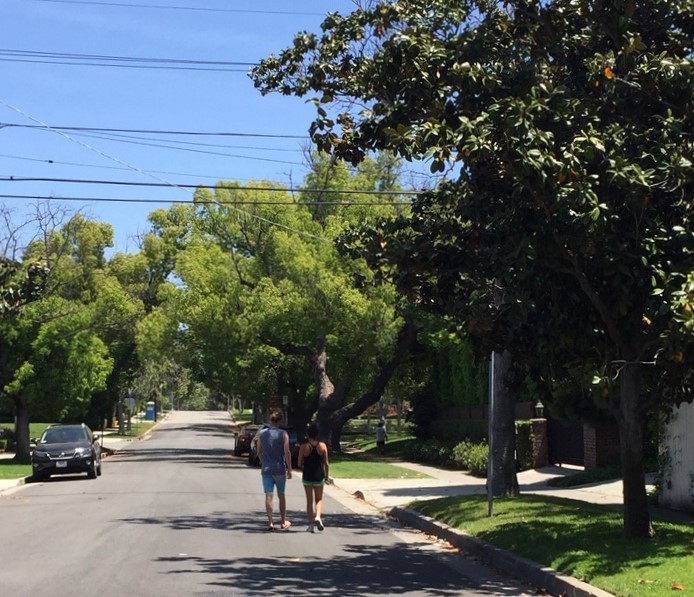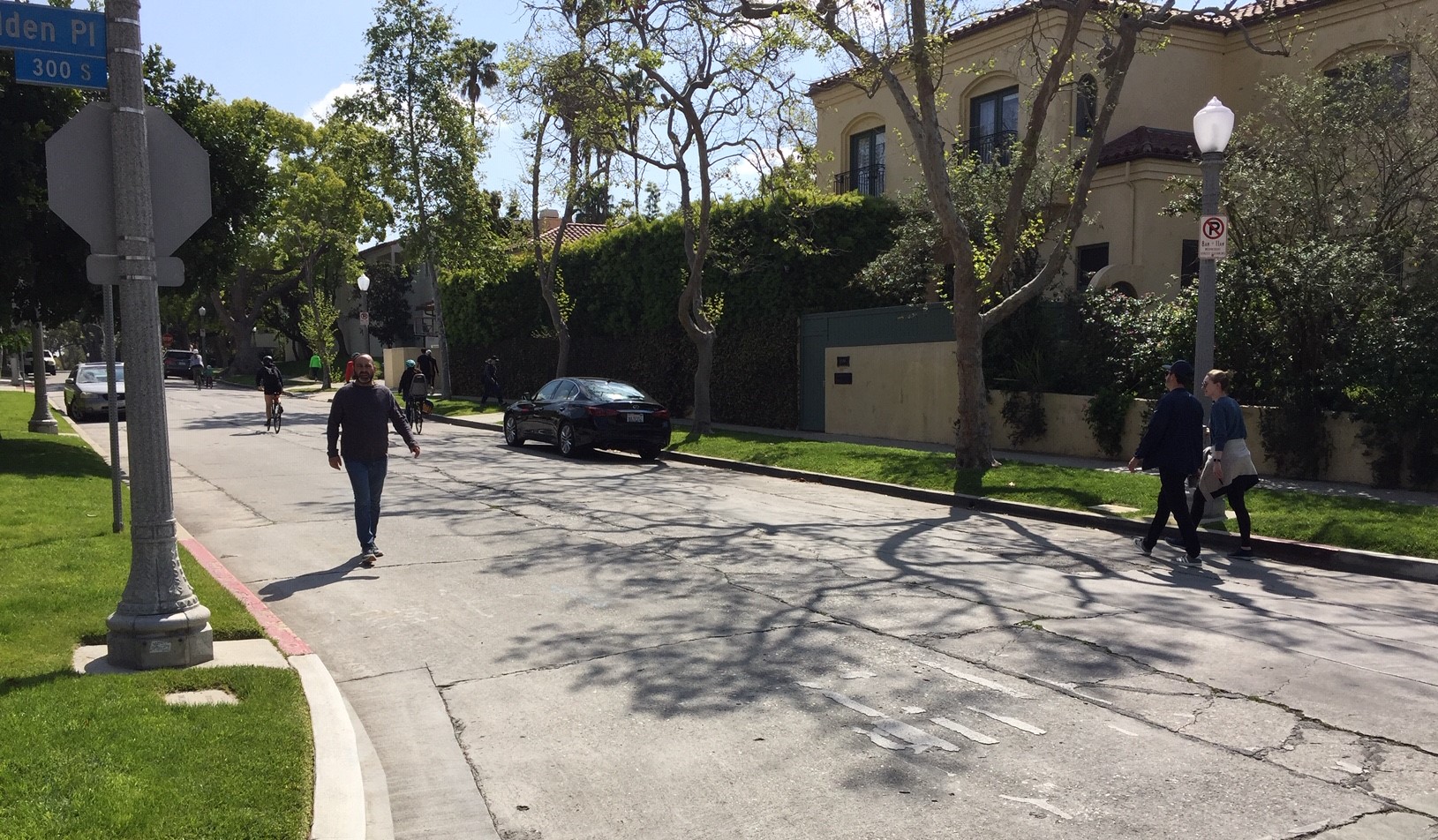More Angelenos are walking and bicycling under COVID-19 safer-at-home orders. Though there are fewer cars on the streets, many of the people who are driving are speeding, leading to dangerous conditions for those pedestrians and cyclists. People on foot are also having a difficult time maintaining social distancing on inadequate L.A. sidewalks, so they get out of others' ways by walking in the streets - where they then contend with car and bike traffic.
Many cities - from Salt Lake City to Boston and in between - are doing quick-build safety improvements to support local walking and bicycling under COVID-19 stay at home orders. Seattle is calling their version Healthy Streets.
An L.A. pilot, now postponed, was called Slow Streets, though there is speculation that that name may refer to the city's processes. Read SBLA or L.A. Times coverage of the postponed Del Mar pilot.
On today's L.A. Podcast, Curbed's Alissa Walker mentioned an unnamed L.A. City Councilmember's response to a community push for Healthy Streets improvements. (The response was shared by Walker via Twitter, but the source who received the email requested that she not share the identity of the councilmember.)
Del Rey's neighborhood council is working with @MikeBoninLA's office which has been very supportive of the idea to open streets.
— Alissa Walker (@awalkerinLA) April 22, 2020
Here's the response one listener received from another council district when they asked if their neighborhood could try a similar plan 🙃 pic.twitter.com/AE4pRke4dX
The L.A. Podcast aptly ridiculed this councilmember's response, noting the nuttiness of asserting that neighbors somehow coordinate time slots with their neighbors. Walker also pointed out disparities where densely-populated neighborhoods' parks are closed, while nearby wealthier community spaces - including the Silver Lake Reservoir walking path - remain open.
Streetsblog will join the critique, especially focusing on "Los Angeles has more square miles of sidewalks than any city in the nation."
This statement ignores the fact that L.A. lost a $1.4 billion lawsuit over the inadequacy of its sidewalks for wheelchair user mobility.
As with many hyperbolic statements about L.A. City and County (for example "L.A. is America's deadliest place for walking"), it fails to include a per capita denominator. In cases like this one, an absolute number is pretty much meaningless if not divided by the number of people sharing it. If city A has 100 square miles of sidewalk and 50 residents and city B has 200 miles of sidewalk and 500 residents, then city B's sidewalks would be more crowded, despite city B having twice as many miles as city A.
L.A. is the second most populous city in the nation; it is second to New York City (which covers a third less area than L.A. City.) Of course L.A. has lots of sidewalks. But lots of sidewalks doesn't equate to adequate sidewalk space for everyone. Just because L.A. has plenty of sidewalks doesn't mean that there is plenty of per capita space for individual Angelenos. This is borne out by Angelenos walking experiences under COVID-19. Especially in core population-dense neighborhoods, it is nearly impossible to walk on the sidewalk and maintain six feet of physical distancing. If council offices are unaware of the situation, then they are likely not spending time walking in Los Angeles.
Under COVID-19 orders, Southern California cities are closing big streets - Wilshire Boulevard, First Street/Alameda Street, Vermont Avenue - for construction projects. The failure to support Healthy Streets - and the rationalizations to support that failure - stem from a lack of councilmember concern for the safety of Angelenos getting around on foot and by bike.








